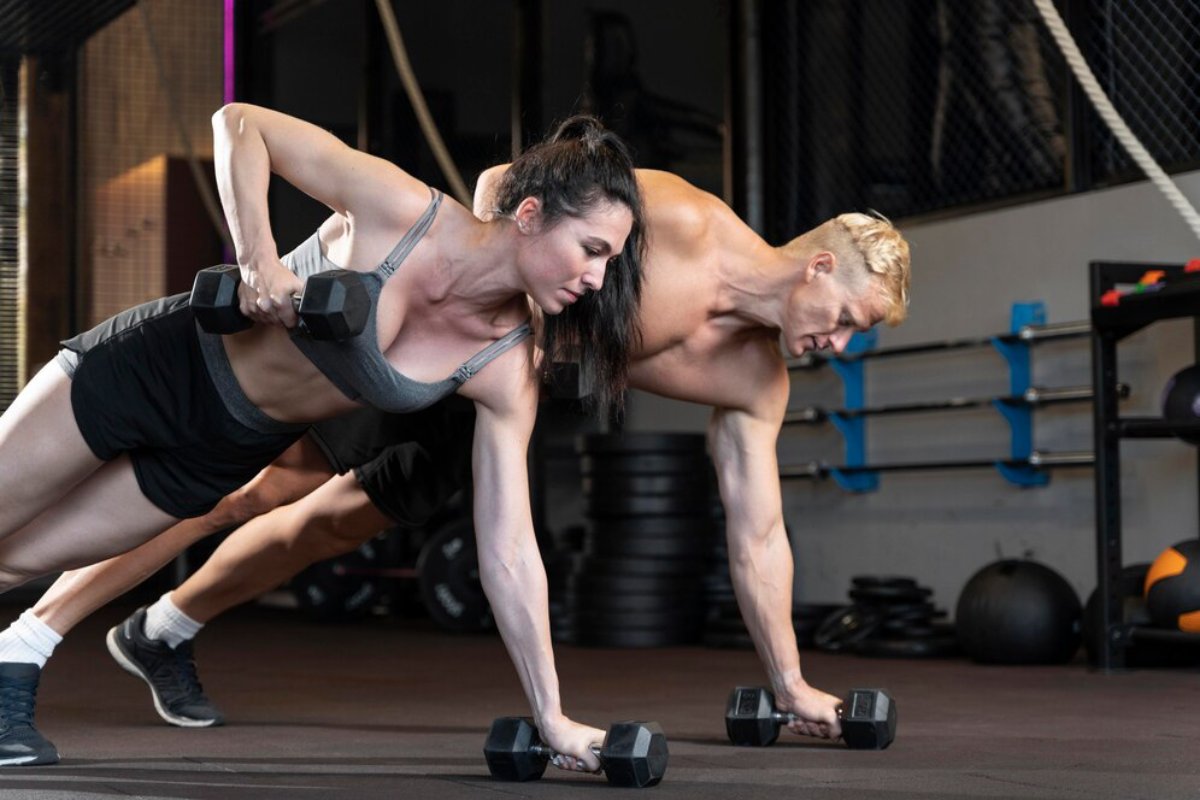
Eccentric Training: The Secret to Strength Gains
Eccentric training is a potent strategy for anyone seeking strength and power boosts. Sometimes neglected, it focuses on the elongating phase of a muscle contraction. Also known as negative reps, this technique requires gently lowering weights. This optimises muscle control and increases strength. This blog will discuss eccentric training benefits mand methods and how you can include them in your workouts.
Eccentric training is no fad; it enjoys robust scientific backing. By focusing on the eccentric phase, individuals can build some serious strength, gain better muscle control, and improve performance. This blog will guide you in understanding and applying eccentric training to tap into its full potential.
Key Benefits of Eccentric Training

Why It Matters
Eccentric training offers many benefits, making it essential for advanced lifting. Here are some reasons why it matters:
- Enhanced Muscle Strength: Eccentric contractions generate more force than concentric ones, boosting muscle strength. Adding negative reps can push your muscles beyond their limits for more significant gains.
- Improved Muscle Control: Slow lifting during the eccentric phase requires high muscle control. Proper form promotes neuromuscular coordination and lowers injury risk.
- Increased Muscle Hypertrophy: Eccentric training stimulates muscle growth more than traditional methods. The prolonged tension during the eccentric phase helps recruit more muscle fibres.
- Injury Prevention: Focusing on the eccentric phase strengthens tendons and connective tissues, reducing injuries, especially for athletes prone to overuse.
- Enhanced Performance: Eccentric training can boost athletic performance by increasing power, speed, and agility. Improved muscle control and strength are necessary for various sports.
Step-by-Step Guide to Eccentric Training
Step 1: Understand the Basics
Before starting, grasp the basics of eccentric training. This method focuses on the lengthening phase of muscle contraction. To achieve this, slowly lower weights during exercises like squats, bench presses, and deadlifts. Maintain control and focus on the muscle worked.
Step 2: Choose the Right Exercises
Not all exercises work for eccentric training. Pick those that allow controlled lowering of weights. Some effective choices include:
- Squats: Lower slowly into the squat position, keeping control.
- Bench Press: Lower the barbell slowly to your chest while maintaining proper form.
- Deadlifts: Lower the barbell slowly, keeping a straight back and engaging your core.
Step 3: Incorporate Negative Reps
Negative reps are key in eccentric training. This means performing the eccentric phase with a heavier weight than what you can lift concentrically. For instance, if you can bench press 100 kg concentrically, try negative reps with 110 kg, focusing on the lowering phase.
Step 4: Focus on Muscle Control
Muscle control is vital during eccentric training. Slow lifting and controlled movements maximise benefits. Keep a steady pace and avoid jerky movements.
Step 5: Gradually Increase Intensity
Like any routine, gradually increase the intensity of your eccentric training. Start with lighter weights and increase the load as you grow comfortable with the technique. This helps prevent injuries and ensures progress.
Additional Expert Tips & Common Mistakes to Avoid

Best Practices for Eccentric Training
- Prioritise Form: Maintain proper form throughout eccentric training to prevent injuries.
- Use a Spotter: When performing negative reps with heavier weights, have a spotter for safety and assistance.
- Incorporate Variety: Mix up your exercises and rep ranges to avoid plateaus and stay motivated.
Common Mistakes to Avoid
- Neglecting the Concentric Phase: Don’t forget the concentric phase. Balance both phases for optimal results.
- Rushing the Movement: Take your time with eccentric training. Rushing can lead to poor form and less effectiveness.
- Overtraining: Eccentric training can be harsh on muscles and joints. Ensure adequate rest to prevent overtraining and injuries.
Advanced Insights & Expert Recommendations
- Incorporate Eccentric Overload: Use heavier weights during the eccentric phase than the concentric phase. Resistance bands or chains can add extra resistance during the lowering phase.
- Utilise Eccentric Isometrics: Eccentric isometrics involve pausing at the bottom of the eccentric phase. Hold the position for a few seconds before completing the concentric phase. This boosts muscle control and stability.
- Combine with Plyometrics: Pairing eccentric training with plyometric exercises can enhance power. For example, do a slow eccentric squat followed by a jump squat.
- Monitor Progress: Log your weights, reps, and sets. This will help you track your improvements and identify areas for growth.
Unlocking Strength Potential with Eccentric Training

Eccentric training forces you to achieve superior muscle strength and performance. Negative reps, muscle control, slow lifts = better strength, hypertrophy, and athletic performance. Eccentric training can take your strength to new levels, whether you’re an advanced lifter or athlete.
He says to keep technique first, technique paramount, though, and increase your eccentric loads gradually. With this guide and expert tips, you can unlock the potential of eccentric training to meet your strength and fitness goals.
Well, your funny training story has just started. Gaining strength is a long process, but with persistence, you will notice differences in your performance and physique. Revolutionise the way you train with eccentric movement, and realise your real strength.


